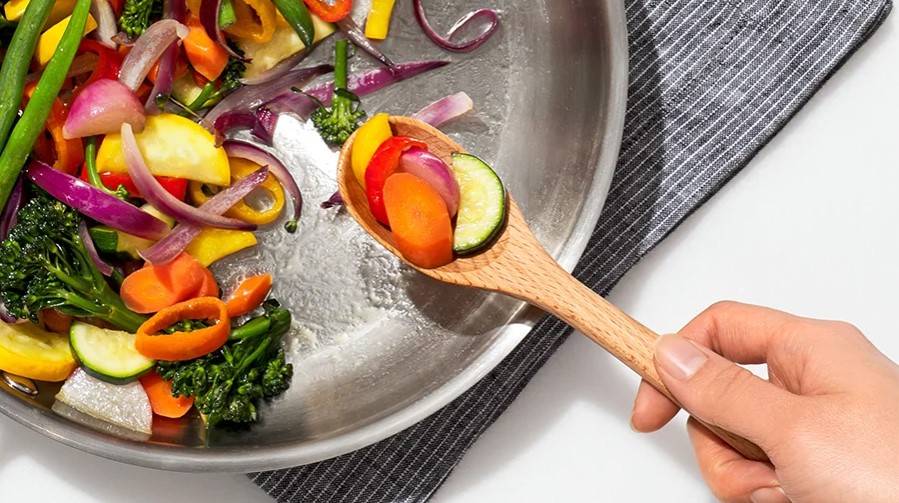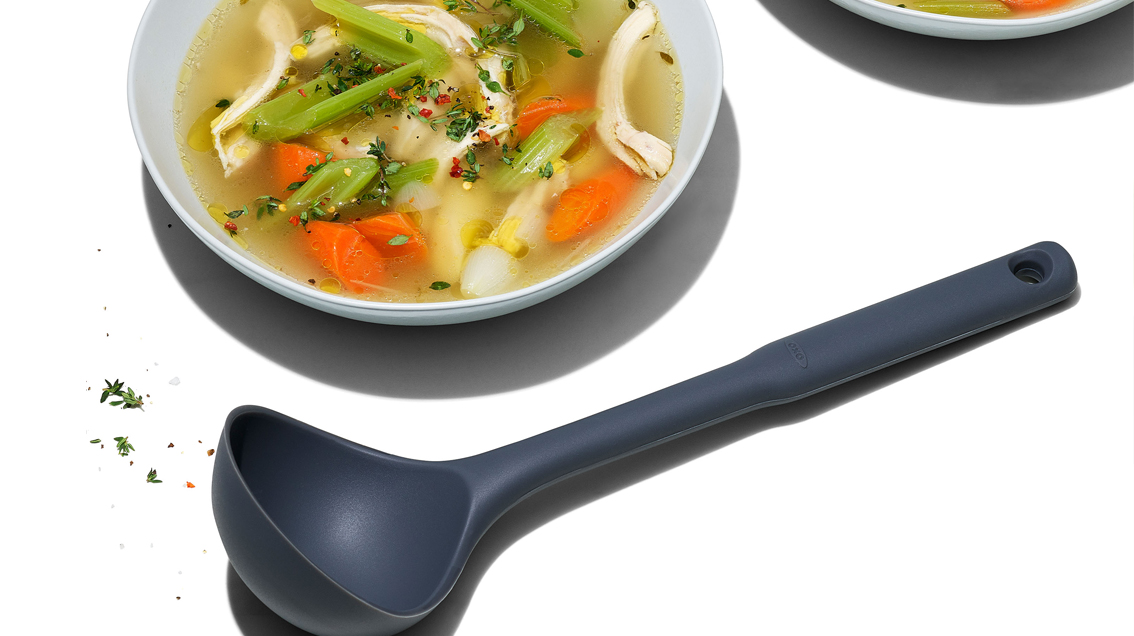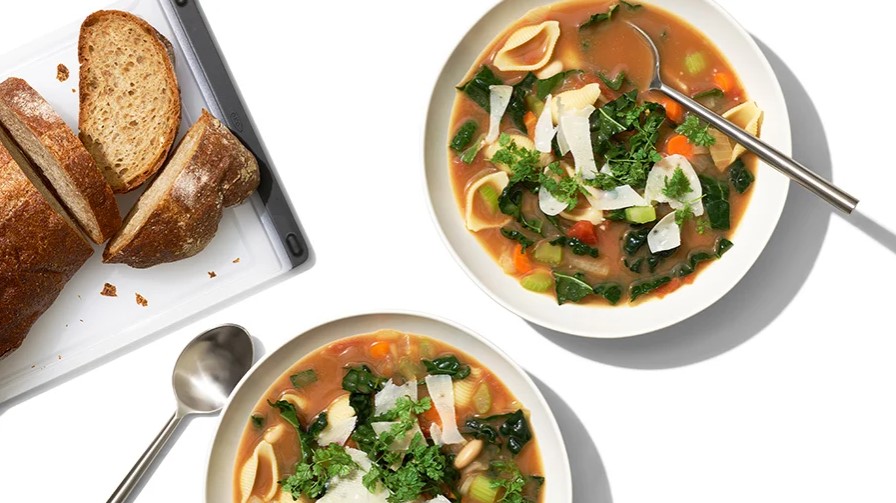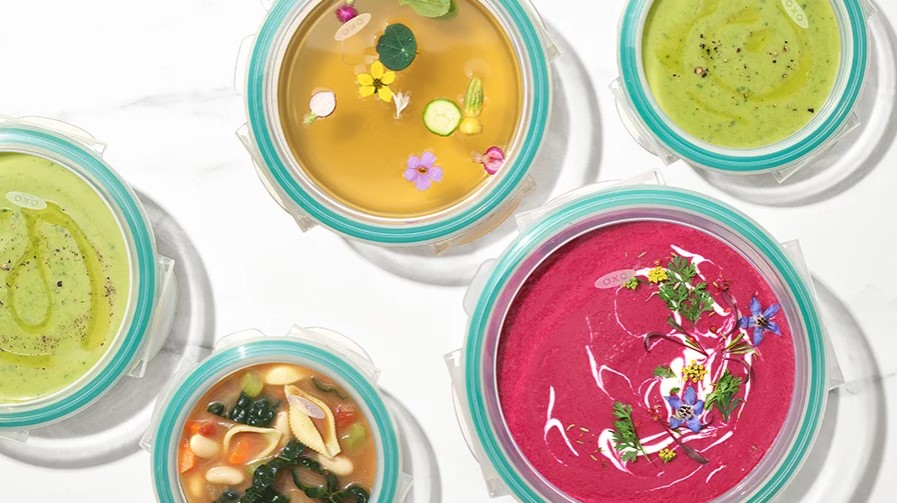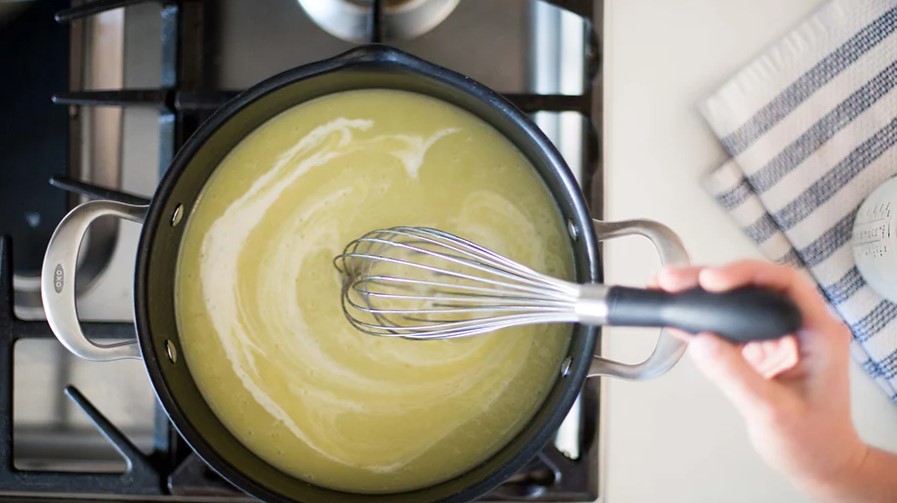
8 Tips for Making Better Soups
Posted by OXO on 28th May 2021
Soups are a great staple for the colder months and we have tips for how to make better homemade soup.
Ever since we’ve mastered the math behind perfectly pureed soups, we like making big batches of hearty soups, ladling some of it for dinner and stashing the rest in the freezer. We’ll take out portions for lunch or reheat it on nights we’re too tired to cook. But if it’s bland or mushy, getting through the batch can be tough. Here are 8 tips for how to make better soups and storing them for later:
1. Surprise! Cheese rinds add flavour to soups.
Store the rinds from your hunks of parmesan and pecorino in your freezer. When you’re going to make soup, add a rind to the pot. It’ll add depth to your homemade broth or soup.
2. Let your vegetables sweat
It’s tempting to throw all ingredients into a pot and walk away, but you’ll get bland results. Instead, add onions and garlic to oil first and let them hang out for a few minutes. Then add your broth. You’ll end up with a more flavourful soup.
3. Cook your grains and pasta al dente.
If your soup calls for rice or noodles, cook them al dente and leave them on the side until the very end. They’ll cook a little longer once they’re added to the hot soup, but won’t become mushy.
4. Cook vegetables al dente, too.
If you’re making a vegetable-heavy soup and planning to freeze part of it, we say cook those vegetables al dente. Fully cooked vegetables become mushy when they’re heated up again.
5. Use an ice cube tray to portion out extra broth.
Once they’re frozen, pop out the cubes and store in a container. Grab a few cubes every time your recipe calls for stock or broth. .
6. Freeze extra soup in leakproof containers for easy transport to work.
Bonus: they’re microwave safe, too.
7. Skip freezing noodles or grains.
Once defrosted and reheated, they’ll turn to a goopy mess. Instead, make the noodles or grains fresh and stir them in right before serving.
8. Skip freezing dairy, too.
Freeze soups like chowders and bisques without cream, since it can leave your soup with a grainy consistency. If a recipe calls for dairy, add it in once your soup has defrosted and you’re reheating it. Note: Coconut milk holds up a little better than cream, but we still recommend waiting to add it after you’ve defrosted the soup.
Soups are a great staple for the colder months and we have tips for how to make better homemade soup.
Ever since we’ve mastered the math behind perfectly pureed soups, we like making big batches of hearty soups, ladling some of it for dinner and stashing the rest in the freezer. We’ll take out portions for lunch or reheat it on nights we’re too tired to cook. But if it’s bland or mushy, getting through the batch can be tough. Here are 8 tips for how to make better soups and storing them for later:
1. Surprise! Cheese rinds add flavour to soups.
Store the rinds from your hunks of parmesan and pecorino in your freezer. When you’re going to make soup, add a rind to the pot. It’ll add depth to your homemade broth or soup.
2. Let your vegetables sweat
It’s tempting to throw all ingredients into a pot and walk away, but you’ll get bland results. Instead, add onions and garlic to oil first and let them hang out for a few minutes. Then add your broth. You’ll end up with a more flavourful soup.
3. Cook your grains and pasta al dente.
If your soup calls for rice or noodles, cook them al dente and leave them on the side until the very end. They’ll cook a little longer once they’re added to the hot soup, but won’t become mushy.
4. Cook vegetables al dente, too.
If you’re making a vegetable-heavy soup and planning to freeze part of it, we say cook those vegetables al dente. Fully cooked vegetables become mushy when they’re heated up again.
5. Use an ice cube tray to portion out extra broth.
Once they’re frozen, pop out the cubes and store in a container. Grab a few cubes every time your recipe calls for stock or broth. .
6. Freeze extra soup in leakproof containers for easy transport to work.
Bonus: they’re microwave safe, too.
7. Skip freezing noodles or grains.
Once defrosted and reheated, they’ll turn to a goopy mess. Instead, make the noodles or grains fresh and stir them in right before serving.
8. Skip freezing dairy, too.
Freeze soups like chowders and bisques without cream, since it can leave your soup with a grainy consistency. If a recipe calls for dairy, add it in once your soup has defrosted and you’re reheating it. Note: Coconut milk holds up a little better than cream, but we still recommend waiting to add it after you’ve defrosted the soup.
